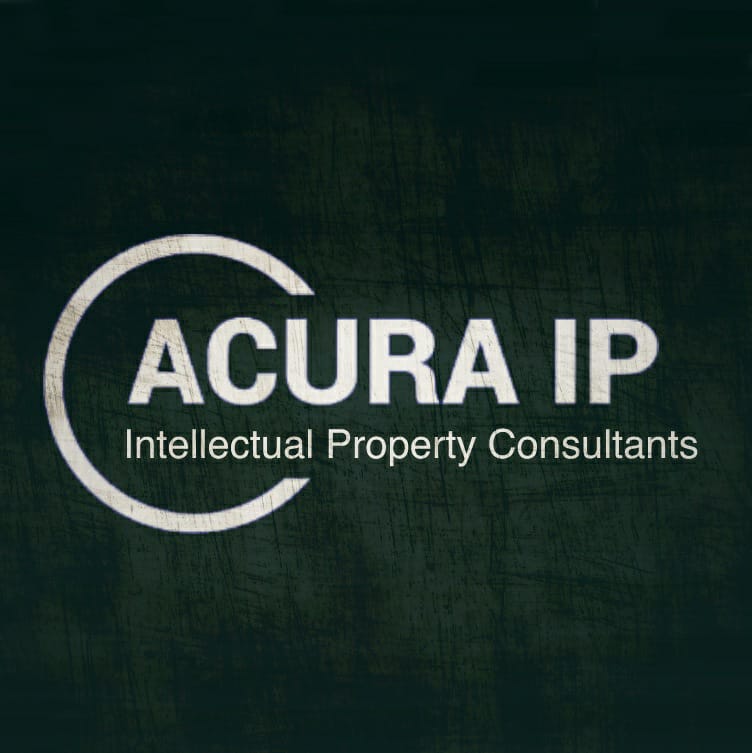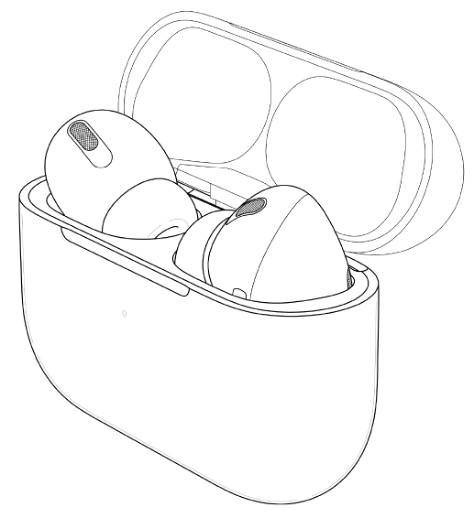
What are Intellectual Property Rights?
Intellectual Property (IP) encompasses intangible assets such as patents, copyright, trademarks, industrial design, geographical indications, and trade secrets. Intellectual Property Rights are conferred to the intellectual property owners to restrict others from copying their creations. The creations could be inventions, books, music, songs, brand names or trademarks, product designs, confidential information, etc.
Depending upon the type of intellectual property, protection may be conferred automatically for a few, and for others, the intellectual property owner must apply for protection in desired countries.
Types of Intellectual Property (IP) Protection
| Types of Protection | Types of Intellectual Property |
|---|---|
| Automatic Protection | Copyright (advisable to register) Trade Secrets (however steps should be taken to keep the information secret) |
| To Be Applied for Protection | Patents, Trademarks, Industrial Designs, and Geographical Indications. |
One Product – Multiple Intellectual Property Rights
Depending upon the subject matter involved, a product includes multiple intellectual property rights i.e., a product can have underlying intellectual property right protection under patents, trademarks, industrial design, copyright, trade secrets, etc.
One such product which forms an indispensable part of our day-to-day life is the mobile phone. The standard smartphones which we use are a complex piece of engineering that performs more than just making and receiving calls. As a result, mobile phones, in general, are always protected by hundreds of patents for the underlying inventions, a brand associated with the mobile phone, the design of the mobile phone, and copyrights.
| Feature of the Mobile Phone | Patents | Trademarks | Designs | Copyrights |
|---|---|---|---|---|
| Technical features and technical solutions offered on the Phone | ✓ | |||
| Components in the Phone | ✓ | |||
| The technical process for manufacturing the phone | ✓ | |||
| The Technical Manual for Assembly of the Phone | ✓ | |||
| The camera on the Phone | ✓ | |||
| Transmitters/Receivers, etc. | ✓ | |||
| Source code | ✓ | |||
| Computer programs exhibiting the technical effect | ✓ | |||
| Design of the phone | ✓ | |||
| Name of the phone | ✓ | |||
| Logo of the Phone | ✓ | ✓ | ||
| User Interface | ✓ |
Source: Swedish Intellectual Property Office (www.prv.se)
Ownership of the Intellectual Property Rights
The ownership of the intellectual property resides with a person who created it and provided it meets the requirements of patent, copyright, trademarks, industrial designs geographical indications, and trade secrets. Like tangible assets, the intellectual property rights can also be jointly owned, can be held by natural persons as well as businesses alike, and can be sold to new parties. Overall, the owner of the intellectual property possesses exclusive rights towards their intellectual property and prevents others from copying or stealing the intellectual property without authorization.
Patents
A patent is a form of intellectual property right which is granted for inventions and it offers a legal right to prevent others from manufacturing, using, selling, or importing for sale or using an invention without authorization. The inventions can be a product or a process that provides a new form of doing something or a new technical solution to a technical problem.
What Qualifies for a Patent?
The main requirements for an invention to qualify for a patent in any country includes:
- that the invention is new;
- that the invention is not obvious to a person skilled in the art (inventive step);
- that the invention is capable of industrial application;
- sufficient disclosure of the invention; and
- that the invention does not fall under the excluded category of inventions;
Non-Patentable Subject Matter
Some of the non-patentable subject matter includes discoveries, scientific principles, mathematical formulas, schemes, rules, mental act, aesthetic creations, frivolous inventions, inventions contrary to public order or morality, the mere discovery of new form, mere admixture, mere re-arrangement, agricultural methods, treatment, plants, animals, presentation of information, the topography of integrated circuits and traditional knowledge.
Why apply for a Patent?
In an ever-competitive market driven by fast-evolving technology, businesses must secure their inventions by patenting them:
- to prevent competitors from stealing or copying their inventions;
- to attain a competitive edge;
- for additional revenue source by way of licensing the patent;
- to attract investments;
- for the possibility of cross-licensing with a competitor;
- to be sold for an additional source of revenue;
- market dominance with a strong patent portfolio;
- build a positive brand value;
The protection of a patent lasts for 20 years from the filing date and since the patent rights are territorial, the exclusive rights are applicable only in the countries where the patent has been granted. To know more about patents, refer to the article titled “What are Patents?” authored by the Consulting Counsel of Acura IP Services, Adv. Sutapa Jana. Further to know more about the patent filing process in India, you may refer to the article titled “Patent Filing Procedure in India” authored by the Consulting Counsel of Acura IP Services, Adv. Gopikrishnan M.
Trademarks
Trademarks serve to identify the products and services with the source of their products and distinguish them on the market for the consumers to identify and also allow for the businesses to build a reputation around the trademark. Trademarks can be in the form of words, graphical marks, taglines, shapes, sounds, and color combinations.
Registration of a trademark is highly advisable for the businesses since it increases the value of the trademark along with a competitive advantage over others and also the registration of a trademark serves as prima facie evidence of the ownership of the trademark. Apart from the above, the trademark also provides an informative function for advertising.
Criteria for Trademark Registration
The distinctive capacity of the trademark acts as a single most important requirement for obtaining a trademark registration. However, protection is difficult to obtain for the trademarks which are generic or descriptive and also if it is similar or identical to the existing trademarks. For more details, you may also refer to our article titled “Does Your Brand Name Qualify as a Trademark?”.
Though descriptive marks are not registrable, suggestive marks can be obtained (for example, ‘good-times’ for a travel agency). Also, arbitrary names can be obtained if it satisfies the criteria of being distinctive (for instance, ‘Apple’ for apple computers). Also, in exception to the descriptive marks, the same may become eligible for registration if such mark attains “secondary meaning” i.e., such mark becomes distinctive by way of extensive and continuous use.
Rights of Trademark Owner
The exclusive right of the trademark owner includes preventing unauthorized use of identical or confusingly similar names for identical goods or services. Further, the rights conferred to the trademark owner are territorial and the trademark registration is granted for 10 years and the same can be renewed every 10 years.
Copyright
Copyright is a legal right conferred to authors over their literary and artistic creations such as books, music, paintings, sculptures, films, and computer programs. Unlike patents, the copyright protects only the form of expression of ideas, not the ideas themselves.
Types of Copyright Works
The different types of “works” recognized under the copyright law include:
- Literary Works include books, articles, databases, poems, lyrics, computer programs/software, etc.
- Artistic Works include labels, paintings, drawings, sketches, maps, etc.
- Dramatic Work includes any piece of recitation, choreographic work, scenic arrangement, which is fixed in writing, etc.
- Musical Work includes musical composition which may be void of graphical notation, etc.
- Sound Recordings include recording of musical compositions on a CD or any other suitable medium, etc.
- Cinematograph Films is essentially a visual and sound recording, etc.
Depending upon the type of work, the protection is in form of exclusive rights such as rights of reproduction, distribution, communication to the public, adaptation, and translation of the work.
Term of Copyright
The term copyright in cases of literary, dramatic, musical, or artistic works includes the lifetime of the author plus 60 years after death. In cases of posthumous, anonymous, and pseudonymous works, works of Government, public undertakings, and international organizations, the term of protection are 60 years from the beginning of the calendar year next following the year in which the work has been first published.
Industrial Design
Generally, the design constitutes the ornamental aspect of articles. Under Indian Law, the designs are recognized as the creation of new and original features of new shape, configuration, surface pattern, ornamentations, and composition of lines or colors applied to articles in their finished state, which is primarily judged by their appearance. Overall, the design must appear and should be visible on the finished article, for which it is meant.
Industrial designs can be applied to a variety of products such as automobiles, mobiles, packages, computers, containers, instruments, textiles, watches, and a range of other goods.
Designs do not cover any mode or principle of construction or operation or anything which is in substance a mere mechanical device and does not cover any trademark, property mark, or artistic work.
Why protect Industrial Designs?
In the recent decade, the aesthetic aspect is playing a major factor in the decision-making of consumers in choosing any product since they are many products that offer the same functionality.
Geographical Indications
A geographical indication (GI) is a sign used on products that have a specific geographical origin and possess unique qualities, characteristics, or a reputation that are due to a particular place of origin. Generally, the GI sign conveys an assurance of quality and distinctiveness which is essentially attributable to the fact of its origin in that defined geographical locality, region, or country.
Rights conferred by Geographical Indications (GI)
It enables those who have the right to use the GI sign to prevent its use by a third party whose product does not conform to the applicable standards. For instance, in the jurisdiction in which the Kancheepuram geographical indication is protected, producers of Kancheepuram Silk can exclude the use of the term “Kancheepuram Silk” for silk not produced according to the standards recognized for the geographical indication.
However, obtaining the GI tag does not enable the holder to prevent someone from making a product using the same techniques since the protection is solely for the right over the sign that constitutes a geographical indication.
Geographical indications are generally used for wine and spirit drinks, foodstuff, agricultural products, handicrafts, and industrial products.
Trade Secrets
Intellectual property rights on confidential information are known as Trade Secrets. To be qualified as a trade secret, the confidential information must be commercially valuable due to its secrecy, known only to a limited group of persons and the holder of the trade secret should take reasonable steps to keep it secret.
Few Examples of Trade Secrets
Trade secrets may comprise both technical as well as commercial information which provides a competitive advantage for the trade secret holder. For instance, the trade secret can be manufacturing processes, pharmaceutical test data, designs, distribution methods, supplier/client lists, advertising strategies, financial information, formulas, recipes, and source codes.
Under the existing legal framework in India, the trade secret holder has remedies against the unlawful acquisition, use, or disclosure of trade secrets in a manner contrary to honest commercial practices.
Difference between Trade Secrets and Patents
The cornerstone of the Patent system is a quid pro quo between the government and the inventor i.e., in exchange for the disclosure of the invention, the inventor is granted ted right to prevent others from working on the invention for a specific time period. On the other hand, there is no such quid pro quo system between the government and the trade secret owner. Instead, the trade secret owner can seek remedies in form of injunctive relief and damages against misuse of such trade secrets.
How long do trade secrets last?
Since the trade secrets are not disclosed to the public, it remains a trade secret as long as such information is confidential. However, it may be noted that the trade secret holder, cannot stop third parties from using the same confidential information, if they acquired or developed such information independently themselves through their own research and development, reverse engineering, etc. Also in specific scenarios, such third parties can also seek patent protection on any independently developed technical information.
To get your creations secured and know more about intellectual property rights, you may go through the FAQs on patents, trademarks, copyright, and designs from here. Alternatively, you can talk to us so that we can suggest you the best way forward. Click here to fill out our contact form to schedule a consultation with our team.



Interpretation of Section 3(i) of the Indian Patent Act, 1970 in the Context of Non-Invasive Prenatal Testing
Introduction The advent of Non-Invasive Prenatal Testing (NIPT) has revolutionized…

Branded Medicines vs. Generic Medicines: The Role of Patents
In the pharmaceutical industry, the distinction between branded and generic…

Utility Patents vs Design Patents (Industrial Designs)
While the definition of Patent merely covers…
Categories
Recent Discussions
Interpretation of Section 3(i) of the Indian Patent Act, 1970 in the Context of Non-Invasive Prenatal Testing
Introduction The advent of Non-Invasive Prenatal Testing (NIPT) has revolutionized prenatal diagnostics, enabling expectant parents to assess the genetic health of the fetus…
Recent Discussions
Branded Medicines vs. Generic Medicines: The Role of Patents
In the pharmaceutical industry, the distinction between branded and generic medicines is an essential one. Understanding this distinction is crucial not just for…



